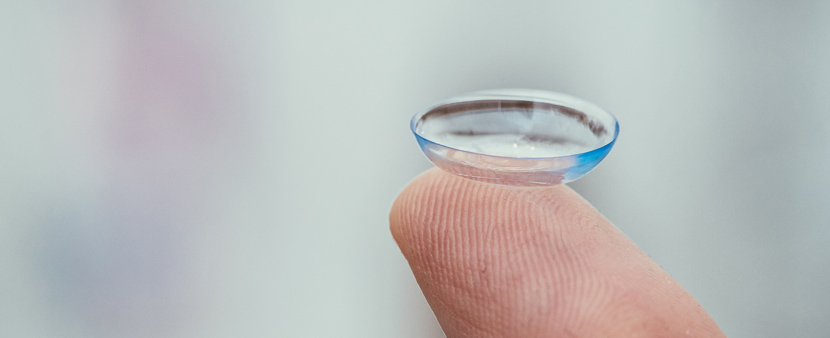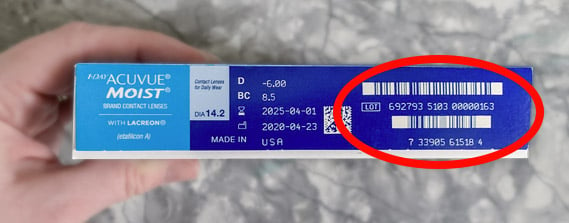What are Contacts Made of?
Soft, rigid gas permeable (RGP), and hybrid contact lenses are all created out of different materials. A simple answer to “what are contacts made of” is plastics—but each type of lens has a variety of materials to aid vision correction, oxygen flow, and comfort.

Soft Contact Lenses
Disposable soft contacts are made out of flexible hydrophilic plastics, also known as hydrogels. Hydrogel lenses absorb water to stay moist and comfortable. The high water content allows plenty of oxygen to reach the cornea. Silicone hydrogels are the newest material for soft contact lenses. They have higher oxygen permeability than regular hydrogel lenses, which can result in greater comfort and better eye health. Extended wear contact lenses are often made from silicone hydrogels because the material allows more oxygen to reach the cornea.
Rigid Gas Permeable Contact Lenses
Rigid gas permeable (RGP) contacts do not absorb water as soft contacts do. Instead, RGP contacts transmit oxygen through small, microscopic holes in the lenses. Today, most gas permeable contacts are made out of acrylate, silicone, and fluorine. Rigid gas permeable contacts are sometimes referred to as hard contacts. Modern RGP lenses are very different from the original hard contacts. They were made out of a harder plastic material called polymethyl methacrylate (PMMA). This material did not allow for any oxygen to pass through to the cornea.
Hybrid Contact Lenses
Hybrid contacts are mostly worn by those who need multifocal lenses or have an irregular astigmatism. They are a combination of soft and RGP contacts with the material of RGP lenses in the center of the lens and the soft contact hydrogel material around the edges. This allows for sharp vision while also being comfortable.
Frequently Asked Questions
Q: What is a Dk or Dk/t value?
A: Contact lens materials have different levels of oxygen transmissibility. The Dk value measures oxygen permeability and the Dk/t value measures the oxygen permeability of the contact lens (the “t” standing for the thickness of the lens). The higher the Dk/t value, the better the oxygen permeability. Silicone hydrogel contacts have pushed the limits of oxygen transmissibility by having a Dk/t value of 100 or more.
Q: Why does oxygen transmissibility matter?
A: Contact lenses decrease the amount of oxygen to the cornea. If the cornea doesn’t receive enough oxygen then swelling, blurred vision, and dry eye can occur. Modern contact lenses allow more oxygen to reach the cornea, but it’s still important to follow the lens replacement schedule given by a doctor.
Q: Why do contacts expire?
A: Contact lenses have an expiration date because the sterile saline solution can go bad and sealed packaging may become compromised over time. For soft contact lenses, the expiration date is typically four years from when they were packaged. Since rigid gas permeable contact lenses are usually shipped dry and not in solution, they might not have an expiration date on the packaging.
Contact lenses have come a long way from originally being made out of glass. Technology has advanced over the years to develop contacts made out of breathable and comfortable materials.

